At NaDI, researchers provide innovative solutions to the new societal challenges posed by the digital revolution (eGov, eHealth, eServices, Big data, etc.). Coming from a variety of disciplines, researchers combine their expertise in IT, technology, ethics, law, management or sociology. Grouping six research centers from various disciplines, the Namur Digital Institute offers a unique multidisciplinary expertise to all areas of informatics, its applications and its social impact.
Among its main competencies are formal methods, man-machine interface, requirement engineering, modeling techniques to reason and design complex software systems, testing, quality insurance, software product lines, data bases, big data, machine learning and more generally artificial intelligence, security, privacy, ethics by design, technology assessment and legal reasoning.

Read more
This content is currently being migrated. We invite you to visit the external page of the research institute.
Spotlight
News
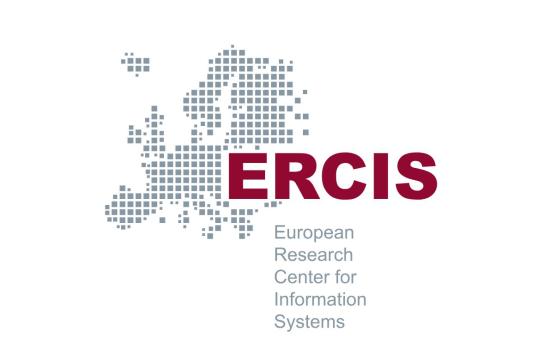
UNamur joins ERCIS, Europe's leading information systems network
UNamur joins ERCIS, Europe's leading information systems network
The University of Namur takes another step forward in its commitment to supporting digital transformation. It is joining the prestigious European Research Center for Information Systems (ERCIS) network as a Partner Institution, via the MINDIT research center (Management de l'Information et Transformation Numérique).

The ERCIS network brings together universities and companies from 25 - mainly European - countries around a common goal: to advance information systems research and meet the challenges of digital transformation. To achieve this, the ERCIS network emphasizes collaborative research, innovation and knowledge sharing.

Joining ERCIS is a fine mark of recognition for the expertise developed by MINDIT and a fantastic opportunity to nurture our research and teaching with an international dimension.
In practical terms, this membership paves the way for training opportunities for MINDIT researchers and PhD students: networking events, annual workshops, summer school or PhD Colloquium. It also creates bridges to develop partnerships at the level of academic programs.
Finally, ERCIS relies on a corporate advisory board, guaranteeing synergy between research and field practices.
MINDIT Research Center
Since 2024, the MINDIT Research Center (NaDI) has been developing expertise in information systems, a field of research at the intersection of computer science and management. MINDIT's work explores the potential of new technologies (AI, Internet of Things, augmented reality, big data...) with the aim of meeting the concrete needs of the business world and public organizations. MINDIT brings together several academics such as Corentin Burnay (director), Isabelle Linden, Stéphane Faulkner and Annick Castiaux.
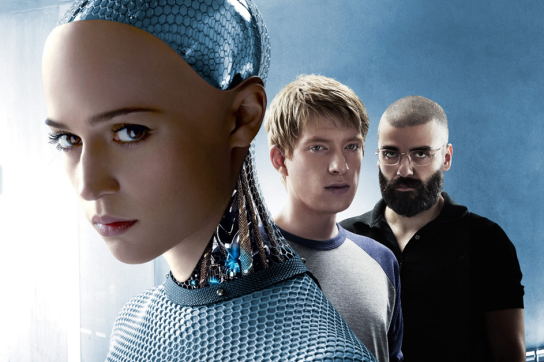
Digital literacy through fiction: NaDI's interdisciplinary initiative
Digital literacy through fiction: NaDI's interdisciplinary initiative
The Namur Digital Institute (NaDI) is launching a series of original events: "Les Séances du Numérique". Films followed by debates with experts to understand digital challenges and stimulate collective thinking. A project spearheaded by Anthony Simonofski, Anne-Sophie Collard, Benoît Vanderose and Fanny Barnabé.
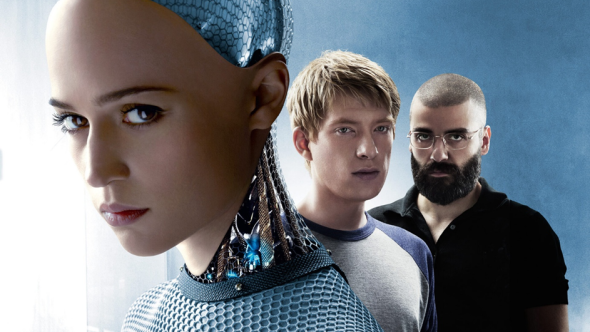
The Digital Sessions are an initiative launched by the NaDI, the digital research institute at UNamur. The latter brings together researchers from the Faculties of law, informatics and EMCP.
To stimulate interdisciplinary collaboration, NaDI has launched a call for projects. One of the selected projects? Les Séances du Numérique, an original format in which fiction becomes the starting point for debate. Each meeting begins with a film screening, followed by an interdisciplinary conference on a digital-related social issue.
An outstanding first Séance du Numérique
To inaugurate the cycle, the team chose to screen The Social Network last May. The film traces the creation of Facebook by Mark Zuckerberg, and the debate focused on the moderation of social networks, a hot topic since the election of Donald Trump. Two experts led the discussion: Julien Albert, expert at the PReCISE center, and Jérémy Grossman, expert at CRIDS.

Educating through fiction
The ambition of these sessions is simple: to educate about digital issues through fiction, and to confront a variety of viewpoints.
This format extends the experience of the podcast Pop-Code already hosted by Anthony Simonofski and Benoît Vanderose, but with an added dimension: interdisciplinarity and direct exchange with the audience. After the film, everyone can question the experts and enrich the reflection.
What next?
Digital technology will be at the heart of future screenings, with a dynamic that is both collaborative and rooted in current affairs:
- Fostering collaboration between several NaDI centers to bring disciplines into dialogue (as was the case at the first session with CRIDS and PReCISE).
- Bouncing off themes linked to current events to guarantee the relevance of exchanges.
Four sessions will be offered per year, open to all, with one priority: reaching out to citizens. The films are there to give the event a cultural and scientific outreach.
Eventually, the team would like to diversify its formats: screenings in cinemas like Caméo, broadcasting series, even playconferences where we play a video game during the debate. The idea: to use fiction in all its forms to kick-start discussion.
The team behind the project
- Fanny Barnabé, lecturer at CRIDS / NaDI
- Anne-Sophie Collard, professor at the EMCP Faculty
- Anthony Simonofski, professor at the EMCP Faculty
- Benoît Vanderose, professor at the Computer Science Faculty
In collaboration with the Knowledge Confluence and the Administration de la communication
Next session: November 4 - "Does AI have a conscience?"
Projection of the film Ex Machina followed by a discussion with Isabelle Linden and Benoît Frenay.
Think, think: is the human being still unique?
Behind the AI revolution, a question arises: does AI have a conscience? For this second screening-debate of Séances du Numérique, we invite you to dive into the film Ex_machina, a troubling face-off between creation and creator, between human and machine, between future and humanity.
Program:
- 5pm: Welcome & film presentation
- 5:15pm: Screening of the film Ex machina
- 7:05pm: Debate "Does AI have a conscience? " (with Isabelle Linden & Benoît Frenay)
- 19h45: end
Two experts will take part in the debate:
- Benoît Frenay, who will shed light on the learning logics of today's artificial intelligences and the limits of their "autonomy". Can we really speak of intelligence without consciousness? How far can imitation go?
- Isabelle Linden, who will question the very foundations of what we call "thinking" in a computer logic. Can we create a conscious machine? Or are we merely facing mirrors of our own desires?

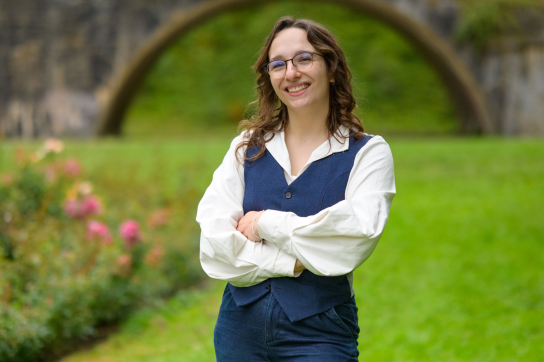
Artificial intelligence, a danger for democracy?
Artificial intelligence, a danger for democracy?
Can we still speak of democracy when algorithms influence our electoral choices or participate in the drafting of laws? This topic is explored by Aline Nardi, researcher at the Faculty of Law and member of the Namur Digital Institute (NADI).
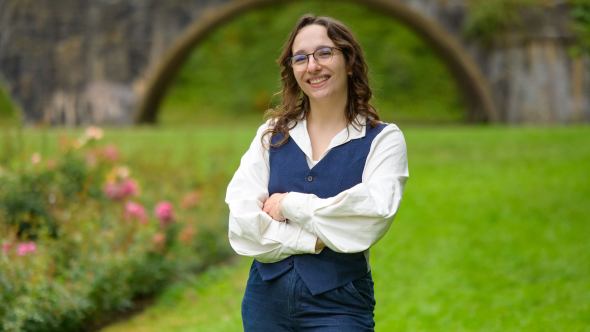
Several projects are already aiming to entrust part of the legislative work to artificial intelligence (AI). While for the time being, these are mainly tools for transcribing parliamentary debates, translating or analyzing archives, drafting tools or legislative texts are also being considered. The use of AI may seem interesting: it can improve readability or facilitate standardization. But, depending on how it is used, it may not spontaneously respect the fundamental principles of the legislative process, such as legality, proportionality or equality. These requirements, established by the Constitutional Court, are the subject of numerous case law decisions. As part of a doctoral thesis, Aline Nardi, is sifting through them to see whether the use of AI is possible in legislative processes.
His finding? "For csome more critical tasks, which go beyond simple editing, problems arise." In particular, she points to the opacity of the reasoning, since "it is difficult to trace why the AI suggests such and such a lead from the query submitted to it". Yet, in a state governed by the rule of law, the legislative process must be transparent and comprehensible if it is to be challenged by parliamentarians and citizens.
There are also issues of democratic legitimacy: "The company that develops the system used by parliamentary assemblies can influence decisions that are extremely important for a nation. Is a parliamentarian still useful if he or she is only there to ratify decisions made by a machine?" asks the jurist.
Elections influenced by AI
On the citizens' side, AI has been transforming election campaigns for some years now. Micro-targeting, automated disinformation, manipulation of emotions via social networks: these are all formidable tools that can skew public debate. The 2016 US presidential campaign clearly illustrates this problem."Cambridge Analytica, for example, targeted and influenced undecided voters whose positions could be tilted in Donald Trump's favor. Around 20 million undecided voters thus received tailored messages, such as memes, videos, blog posts in favor of Trump", recalls Aline Nardi. Combined with social networks, AI therefore calls into question the right of voters to form an opinion based on pluralist and reliable information.
More recently, the Romanian Constitutional Court invalidated the 2024 presidential election on the grounds of misuse of AI and lack of transparency in digital campaigns. "This affected the freely expressed nature of the citizens' vote and in particular their right to be properly informed, explains Aline Nardi.
The European Union is trying to take action against these abuses. Several regulations have been put in place. They aim to frame digital technologies and limit their harmful effects on the information space, particularly during electoral processes. These regulations include the Digital Services Act (DSA), the AI Regulation and the Transparency and Targeting of Political Advertising Regulation (TTPA). These regulations have prompted Google, and more recently Meta, to stop allowing political, electoral and social issue advertising in the European Union.
"However, questions remain as to the applicability, concrete implementation and effectiveness of certain standards stemming from bodies of digital law", alerts Aline Nardi, who calls for "sortir de ce flou juridique".
On the same subject
- University and democracy: a living link, sometimes threatened
An academic year dedicated to democracy
Find the speech given by Rectrice Annick Castiaux at the 2025-2026 Academic Back-to-School Ceremony.
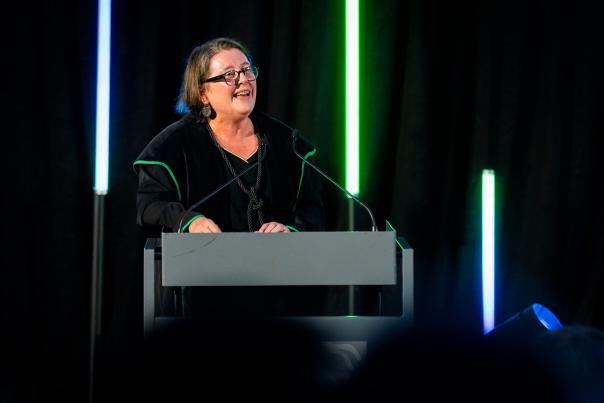
Cet article est tiré de la rubrique "Le jour où" du magazine Omalius #38 (Septembre 2025).
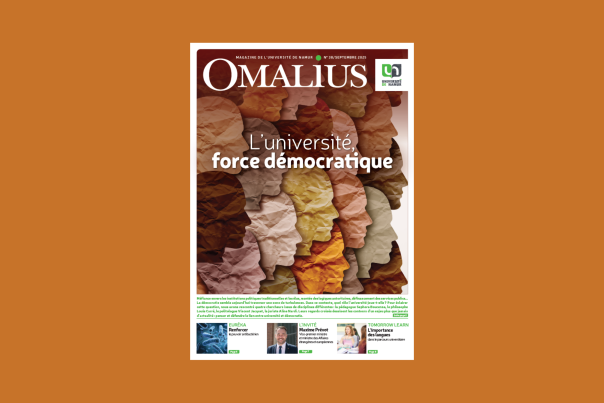
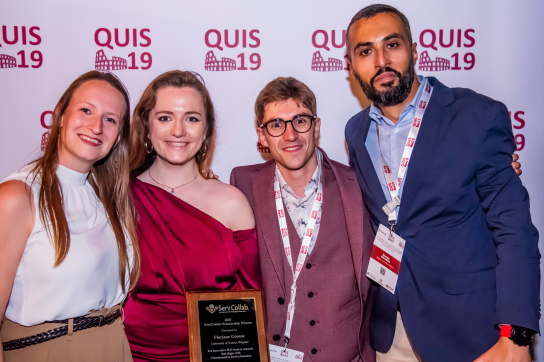
EMCP Faculty: three researchers win awards - #3 When AI becomes more human: Florence Nizette (NaDI) wins an international award
EMCP Faculty: three researchers win awards - #3 When AI becomes more human: Florence Nizette (NaDI) wins an international award
This summer's third and final focus on the NaDI-CeRCLe research center, which has gained international recognition in recent weeks thanks to awards won by three young researchers in service management. Following on from Floriane Goosse and Victor Sluÿters, we invite you to discover the work of Florence Nizette, a young researcher working on Artificial Intelligence technologies.
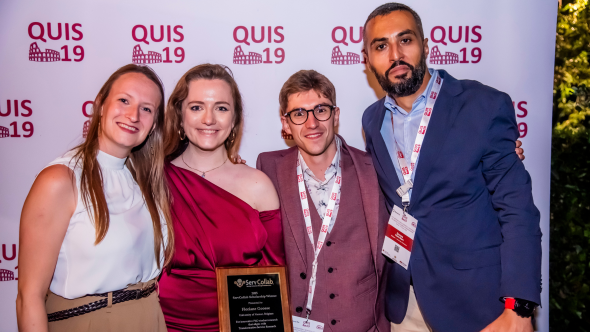
It was at an international, multidisciplinary conference organized by the University of Zaragoza (Spain), AIRSI 2025, which brings together over 200 researchers around 4.0 technologies (artificial intelligence, robotics, virtual assistants, avatars, metavers, augmented reality, big data, etc.), that Florence Nizette brilliantly received the Best Paper Award for an article from her thesis in artificial intelligence.
.More transparent and trustworthy AI services
In her thesis, Florence Nizette looks at user confidence in AI technologies, and in particular at the notion of their "explainability" (XAI). An essential aspect in making these tools more understandable, at a time when their use is only increasing in many sectors.
The originality of Florence Nizette's work lies in the deployment of a multi-stakeholder perspective, an aspect as yet little studied in the literature yet crucial to fostering the adoption of these tools. "I interviewed various actors in sensitive sectors such as finance or insurance, where trust is key: company executives, managers, experts, developers and users with the aim of gaining a global view of how to improve the explicability of AI services. My work consisted in identifying the expectations and constraints encountered by each of the stakeholders with the aim of building bridges between these different actors and seeing how they can collaborate to improve AI-enabled services."
By reconceptualizing explicability as a human-centric challenge, Florence Nizette's study provides theoretical and practical keys to developing more transparent and trustworthy AI systems, aligned with business needs and compliant with regulations.
Research conducted at UNamur and Hasselt University
For this project - based on interviews conducted internationally with XAI players and stakeholders - Florence Nizette benefits from the guidance of its promoters, Professors Wafa Hammedi (UNamur), Allard Van Riel (Hasselt University) and Nadia Steils (HEC Liège). Indeed, the researcher has the particularity of conducting her research at both UNamur and Hasselt University. An advantage in her view: "It's very enriching, both from an intellectual point of view and in terms of access to resources and networks in both regions", explains Florence Nizette.
A career guided by rigor, curiosity and a taste for exchange
Beyond the scientific aspect, Florence emphasizes the human richness of her career. As part of the dynamic team at the NaDI-CeRCLe research center, she emphasizes the mutual support and collaboration that prevail within her group, while also having the opportunity to exchange with different teams at other universities and internationally. The guidance of her three promoters, each bringing a singular perspective to her work, has been invaluable support throughout.
According to Florence, the singularity of her career path lies in this openness: learning and progressing by helping others and receiving their advice, finding enrichment in the diversity of collaborations and points of view. "What stimulates me in a PhD is scientific discovery as much as human interaction: the discussions, the collaborations, the diversity of perspectives", she explains. An experience that is both formative and deeply human, illustrating the power of networking, sharing and international openness.
Florence has benefited from the academic anchorage offered by a community of researchers in service, both nationally and internationally. The scientific rigor, methodological rigor and quality of exchanges that characterize this community represent an invaluable opportunity for any young researcher. This environment has nurtured his scientific maturity and enabled him to raise his work to a higher level.
The research center, with its stimulating yet caring atmosphere, provides fertile ground for academic development. Added to this is the participation in or organization of events of international stature, such as Let's Talk About Service (LTAS), the benchmark conference by the American Marketing Association, held in 2023 in Namur, as well as seminars regularly hosting renowned researchers. These experiences have not only enabled her to integrate the highest standards of the discipline, but also to challenge herself in order to develop and refine her skills as a researcher.
.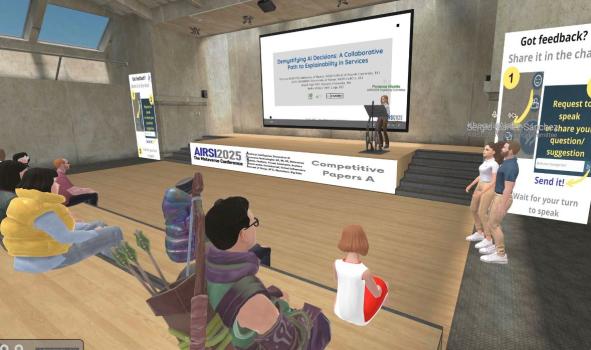
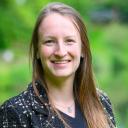
A PhD is more than research; it is a journey of growth, curiosity, and resilience. Every challenge faced is an opportunity to learn and every discovery is a step toward making a meaningful impact.

UNamur joins ERCIS, Europe's leading information systems network
UNamur joins ERCIS, Europe's leading information systems network
The University of Namur takes another step forward in its commitment to supporting digital transformation. It is joining the prestigious European Research Center for Information Systems (ERCIS) network as a Partner Institution, via the MINDIT research center (Management de l'Information et Transformation Numérique).

The ERCIS network brings together universities and companies from 25 - mainly European - countries around a common goal: to advance information systems research and meet the challenges of digital transformation. To achieve this, the ERCIS network emphasizes collaborative research, innovation and knowledge sharing.

Joining ERCIS is a fine mark of recognition for the expertise developed by MINDIT and a fantastic opportunity to nurture our research and teaching with an international dimension.
In practical terms, this membership paves the way for training opportunities for MINDIT researchers and PhD students: networking events, annual workshops, summer school or PhD Colloquium. It also creates bridges to develop partnerships at the level of academic programs.
Finally, ERCIS relies on a corporate advisory board, guaranteeing synergy between research and field practices.
MINDIT Research Center
Since 2024, the MINDIT Research Center (NaDI) has been developing expertise in information systems, a field of research at the intersection of computer science and management. MINDIT's work explores the potential of new technologies (AI, Internet of Things, augmented reality, big data...) with the aim of meeting the concrete needs of the business world and public organizations. MINDIT brings together several academics such as Corentin Burnay (director), Isabelle Linden, Stéphane Faulkner and Annick Castiaux.

Digital literacy through fiction: NaDI's interdisciplinary initiative
Digital literacy through fiction: NaDI's interdisciplinary initiative
The Namur Digital Institute (NaDI) is launching a series of original events: "Les Séances du Numérique". Films followed by debates with experts to understand digital challenges and stimulate collective thinking. A project spearheaded by Anthony Simonofski, Anne-Sophie Collard, Benoît Vanderose and Fanny Barnabé.

The Digital Sessions are an initiative launched by the NaDI, the digital research institute at UNamur. The latter brings together researchers from the Faculties of law, informatics and EMCP.
To stimulate interdisciplinary collaboration, NaDI has launched a call for projects. One of the selected projects? Les Séances du Numérique, an original format in which fiction becomes the starting point for debate. Each meeting begins with a film screening, followed by an interdisciplinary conference on a digital-related social issue.
An outstanding first Séance du Numérique
To inaugurate the cycle, the team chose to screen The Social Network last May. The film traces the creation of Facebook by Mark Zuckerberg, and the debate focused on the moderation of social networks, a hot topic since the election of Donald Trump. Two experts led the discussion: Julien Albert, expert at the PReCISE center, and Jérémy Grossman, expert at CRIDS.

Educating through fiction
The ambition of these sessions is simple: to educate about digital issues through fiction, and to confront a variety of viewpoints.
This format extends the experience of the podcast Pop-Code already hosted by Anthony Simonofski and Benoît Vanderose, but with an added dimension: interdisciplinarity and direct exchange with the audience. After the film, everyone can question the experts and enrich the reflection.
What next?
Digital technology will be at the heart of future screenings, with a dynamic that is both collaborative and rooted in current affairs:
- Fostering collaboration between several NaDI centers to bring disciplines into dialogue (as was the case at the first session with CRIDS and PReCISE).
- Bouncing off themes linked to current events to guarantee the relevance of exchanges.
Four sessions will be offered per year, open to all, with one priority: reaching out to citizens. The films are there to give the event a cultural and scientific outreach.
Eventually, the team would like to diversify its formats: screenings in cinemas like Caméo, broadcasting series, even playconferences where we play a video game during the debate. The idea: to use fiction in all its forms to kick-start discussion.
The team behind the project
- Fanny Barnabé, lecturer at CRIDS / NaDI
- Anne-Sophie Collard, professor at the EMCP Faculty
- Anthony Simonofski, professor at the EMCP Faculty
- Benoît Vanderose, professor at the Computer Science Faculty
In collaboration with the Knowledge Confluence and the Administration de la communication
Next session: November 4 - "Does AI have a conscience?"
Projection of the film Ex Machina followed by a discussion with Isabelle Linden and Benoît Frenay.
Think, think: is the human being still unique?
Behind the AI revolution, a question arises: does AI have a conscience? For this second screening-debate of Séances du Numérique, we invite you to dive into the film Ex_machina, a troubling face-off between creation and creator, between human and machine, between future and humanity.
Program:
- 5pm: Welcome & film presentation
- 5:15pm: Screening of the film Ex machina
- 7:05pm: Debate "Does AI have a conscience? " (with Isabelle Linden & Benoît Frenay)
- 19h45: end
Two experts will take part in the debate:
- Benoît Frenay, who will shed light on the learning logics of today's artificial intelligences and the limits of their "autonomy". Can we really speak of intelligence without consciousness? How far can imitation go?
- Isabelle Linden, who will question the very foundations of what we call "thinking" in a computer logic. Can we create a conscious machine? Or are we merely facing mirrors of our own desires?


Artificial intelligence, a danger for democracy?
Artificial intelligence, a danger for democracy?
Can we still speak of democracy when algorithms influence our electoral choices or participate in the drafting of laws? This topic is explored by Aline Nardi, researcher at the Faculty of Law and member of the Namur Digital Institute (NADI).

Several projects are already aiming to entrust part of the legislative work to artificial intelligence (AI). While for the time being, these are mainly tools for transcribing parliamentary debates, translating or analyzing archives, drafting tools or legislative texts are also being considered. The use of AI may seem interesting: it can improve readability or facilitate standardization. But, depending on how it is used, it may not spontaneously respect the fundamental principles of the legislative process, such as legality, proportionality or equality. These requirements, established by the Constitutional Court, are the subject of numerous case law decisions. As part of a doctoral thesis, Aline Nardi, is sifting through them to see whether the use of AI is possible in legislative processes.
His finding? "For csome more critical tasks, which go beyond simple editing, problems arise." In particular, she points to the opacity of the reasoning, since "it is difficult to trace why the AI suggests such and such a lead from the query submitted to it". Yet, in a state governed by the rule of law, the legislative process must be transparent and comprehensible if it is to be challenged by parliamentarians and citizens.
There are also issues of democratic legitimacy: "The company that develops the system used by parliamentary assemblies can influence decisions that are extremely important for a nation. Is a parliamentarian still useful if he or she is only there to ratify decisions made by a machine?" asks the jurist.
Elections influenced by AI
On the citizens' side, AI has been transforming election campaigns for some years now. Micro-targeting, automated disinformation, manipulation of emotions via social networks: these are all formidable tools that can skew public debate. The 2016 US presidential campaign clearly illustrates this problem."Cambridge Analytica, for example, targeted and influenced undecided voters whose positions could be tilted in Donald Trump's favor. Around 20 million undecided voters thus received tailored messages, such as memes, videos, blog posts in favor of Trump", recalls Aline Nardi. Combined with social networks, AI therefore calls into question the right of voters to form an opinion based on pluralist and reliable information.
More recently, the Romanian Constitutional Court invalidated the 2024 presidential election on the grounds of misuse of AI and lack of transparency in digital campaigns. "This affected the freely expressed nature of the citizens' vote and in particular their right to be properly informed, explains Aline Nardi.
The European Union is trying to take action against these abuses. Several regulations have been put in place. They aim to frame digital technologies and limit their harmful effects on the information space, particularly during electoral processes. These regulations include the Digital Services Act (DSA), the AI Regulation and the Transparency and Targeting of Political Advertising Regulation (TTPA). These regulations have prompted Google, and more recently Meta, to stop allowing political, electoral and social issue advertising in the European Union.
"However, questions remain as to the applicability, concrete implementation and effectiveness of certain standards stemming from bodies of digital law", alerts Aline Nardi, who calls for "sortir de ce flou juridique".
On the same subject
- University and democracy: a living link, sometimes threatened
An academic year dedicated to democracy
Find the speech given by Rectrice Annick Castiaux at the 2025-2026 Academic Back-to-School Ceremony.

Cet article est tiré de la rubrique "Le jour où" du magazine Omalius #38 (Septembre 2025).


EMCP Faculty: three researchers win awards - #3 When AI becomes more human: Florence Nizette (NaDI) wins an international award
EMCP Faculty: three researchers win awards - #3 When AI becomes more human: Florence Nizette (NaDI) wins an international award
This summer's third and final focus on the NaDI-CeRCLe research center, which has gained international recognition in recent weeks thanks to awards won by three young researchers in service management. Following on from Floriane Goosse and Victor Sluÿters, we invite you to discover the work of Florence Nizette, a young researcher working on Artificial Intelligence technologies.

It was at an international, multidisciplinary conference organized by the University of Zaragoza (Spain), AIRSI 2025, which brings together over 200 researchers around 4.0 technologies (artificial intelligence, robotics, virtual assistants, avatars, metavers, augmented reality, big data, etc.), that Florence Nizette brilliantly received the Best Paper Award for an article from her thesis in artificial intelligence.
.More transparent and trustworthy AI services
In her thesis, Florence Nizette looks at user confidence in AI technologies, and in particular at the notion of their "explainability" (XAI). An essential aspect in making these tools more understandable, at a time when their use is only increasing in many sectors.
The originality of Florence Nizette's work lies in the deployment of a multi-stakeholder perspective, an aspect as yet little studied in the literature yet crucial to fostering the adoption of these tools. "I interviewed various actors in sensitive sectors such as finance or insurance, where trust is key: company executives, managers, experts, developers and users with the aim of gaining a global view of how to improve the explicability of AI services. My work consisted in identifying the expectations and constraints encountered by each of the stakeholders with the aim of building bridges between these different actors and seeing how they can collaborate to improve AI-enabled services."
By reconceptualizing explicability as a human-centric challenge, Florence Nizette's study provides theoretical and practical keys to developing more transparent and trustworthy AI systems, aligned with business needs and compliant with regulations.
Research conducted at UNamur and Hasselt University
For this project - based on interviews conducted internationally with XAI players and stakeholders - Florence Nizette benefits from the guidance of its promoters, Professors Wafa Hammedi (UNamur), Allard Van Riel (Hasselt University) and Nadia Steils (HEC Liège). Indeed, the researcher has the particularity of conducting her research at both UNamur and Hasselt University. An advantage in her view: "It's very enriching, both from an intellectual point of view and in terms of access to resources and networks in both regions", explains Florence Nizette.
A career guided by rigor, curiosity and a taste for exchange
Beyond the scientific aspect, Florence emphasizes the human richness of her career. As part of the dynamic team at the NaDI-CeRCLe research center, she emphasizes the mutual support and collaboration that prevail within her group, while also having the opportunity to exchange with different teams at other universities and internationally. The guidance of her three promoters, each bringing a singular perspective to her work, has been invaluable support throughout.
According to Florence, the singularity of her career path lies in this openness: learning and progressing by helping others and receiving their advice, finding enrichment in the diversity of collaborations and points of view. "What stimulates me in a PhD is scientific discovery as much as human interaction: the discussions, the collaborations, the diversity of perspectives", she explains. An experience that is both formative and deeply human, illustrating the power of networking, sharing and international openness.
Florence has benefited from the academic anchorage offered by a community of researchers in service, both nationally and internationally. The scientific rigor, methodological rigor and quality of exchanges that characterize this community represent an invaluable opportunity for any young researcher. This environment has nurtured his scientific maturity and enabled him to raise his work to a higher level.
The research center, with its stimulating yet caring atmosphere, provides fertile ground for academic development. Added to this is the participation in or organization of events of international stature, such as Let's Talk About Service (LTAS), the benchmark conference by the American Marketing Association, held in 2023 in Namur, as well as seminars regularly hosting renowned researchers. These experiences have not only enabled her to integrate the highest standards of the discipline, but also to challenge herself in order to develop and refine her skills as a researcher.
.

A PhD is more than research; it is a journey of growth, curiosity, and resilience. Every challenge faced is an opportunity to learn and every discovery is a step toward making a meaningful impact.


